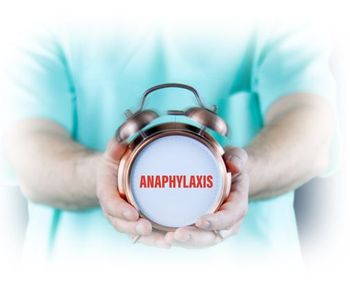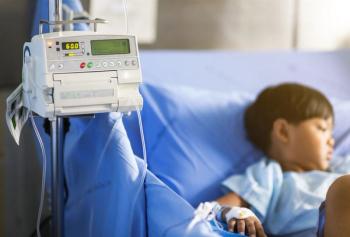
8 Tough Questions on Seasonal Allergy
Test your intel on asthma and rain, novel immunotherapy, atopy and birth season, and other allergy aggravations.
Question 1:
Answer on next page »
Answer: A. True
Although elderly patients commonly suffer from seasonal allergies, diagnosis and management of the condition is often overlooked. Common comorbidities like diabetes and cardiovascular disease in this population can take precedence and complicate management. In addition, guidelines rarely focus on the elderly, and they are often excluded from clinical trials. A double-blind, randomized controlled trial published in February 2016, however, has suggested that elderly patients, despite having an aging immune system, may respond just as well to SCIT as younger patients.1 The Polish study randomized 60 patients aged 65-75 years to preseasonal SCIT (n=33) or placebo (n=27). Compared to placebo, SCIT was associated with 64% decreased use of concomitant medications, and 55% decrease in symptoms. 1
Next question »
Question 2:
Answer on next page »
Answer: B. Rosacea
Existing research has suggested an inverse relationship between respiratory allergies, asthma, eczema, and glioma risk. In February 2016, an international consortium of researchers from 14 medical centers published findings that confirmed this relationship and may help build consensus about atopy and reduced risk of glioma.2 The study used data from the Glioma International Case-Control Study and is the largest so far, with 4,533 cases and 4,171 controls. Results showed 30% lower risk for glioma among patients with hay fever, and similar findings for asthma and eczema. In contrast, a recent Danish study that analyzed almost 5.5 million people found that rosacea was associated with significantly increased risk of glioma (adjusted incidence rate ratio of 1.36 [1.18-1.58]). Rosacea and glioma may share a common mechanism, because both show upregulation of matrix metalloproteinases.3
Next question »
Question 3:
Answer on next page »
Answer: D. Equipment required is easy to use and readily available in most medical clinics (false).
ILIT is a new form of allergen-specific immunotherapy that is delivered as three allergen injections into the lymph node over twelve weeks. Compared to SCIT, ILIT has fewer injections given over a shorter period of time, which may decrease costs and improve patient adherence. A recent double-blind, placebo-controlled trial of 36 patients randomized to ILIT vs placebo found significant improvement for patients in the ILIT group, and no moderate or severe reactions. Several past studies have also found ILIT to be effective and safe, but results need to be confirmed in larger, longer-term trials. Compared to SCIT, ILIT requires more complex medical equipment (a fine needle with ultrasound guidance) and greater technical precision to target relatively small lymph nodes.4
Next question »
Question 4:
Answer on next page »
Answer: C. 300 IR
Low doses of SLIT can lead to an ineffective response, while high doses can increase adverse effects. A recent review has found substantial evidence to support 300 IR as the dose of SLIT that produces optimal efficacy and tolerability for treatment of allergic rhinitis due to grass and birch pollen, and house dust mite allergies. This dose can be given as drops or tablets and is also associated with greater patient adherence and satisfaction (likely related to improved clinical efficacy and tolerability). Studies suggest that the 300 IR dose is effective in the short- and long-term in pediatric and adult patients. This dose has also been shown to have sustained clinical benefit, even after stopping therapy.5
Next question »
Question 5:
Answer on next page »
Answer: B. False
Using the sublingual route to deliver immunotherapy usually requires 50-100 times more allergen to reach clinical efficacy similar to that achieved with subcutaneous delivery. Because of the higher level of allergen needed, low-dose SLIT is generally considered to be ineffective. SLIT is available as tablets or drops given on a daily basis for 3-5 years, and can be taken at home after the first dose. SCIT requires monthly injections and monthly clinic visits, but no daily dosing.5
Next question »
Question 6:
Answer on next page »
Answer: D. All of the above
The
Next question »
Question 7:
Answer on next page »
Answer: A. True, thunderstorms may provoke an asthma attack.
Accumulating evidence, which includes epidemiologic studies in Europe, Canada, the US, and Australia, suggests that thunderstorms can provoke asthma attacks, especially during the pollen season. The primary explanation posits that thunderstorm activity may lead to concentration of pollen grains and fungal spores near the ground; when ruptured by osmotic shock, pollen grains then release respirable allergenic particles that further increase the density of material that can trigger asthma attacks. People affected by seasonal rhinitis, but not asthma, also are vulnerable to asthma symptoms during thunderstorms.7
Next question »
Question 8:
Answer on next page »
Answer: E. B (Fall) and C (Winter)
Studies have suggested an increased prevalence of type 2 immune-mediated responses in children born during fall and winter, which may increase risk of asthma and allergy later in life. A recent study that analyzed cord blood and airway mucosal lining fluid from children in the Copenhagen Prospective Studies on Asthma in Childhood found increased type 2 (atopy) responses in neonates born during fall and winter. Children born during winter also had elevated type 1 (autoimmune) responses. Winter babies had the highest levels of most immune cell types and mediators, while summer babies had the lowest levels. The mechanism is unknown, but could be related to maternal exposure to bacteria and viruses, as well as maternal inflammatory responses.8
References:
1. Bozek A, Kolodziejczyk K, Krajewska-Wojtys A, et al. Pre-seasonal, subcutaneous immunotherapy: a double-blinded, placebo-controlled study in elderly patients with an allergy to grass.
2. Amirian ES, Zhou R, Wrensch MR, et al. Approaching a scientific consensus on the association between allergies and glioma risk: a report from the Glioma International Case-Control Study.
3. Egeberg A, Hansen PR, Gislason GH, Thyssen JP. Association of rosacea with risk for glioma in a Danish nationwide cohort study.
4. Hylander T, Larsson O, Petersson-Westin U, et al. Intralymphatic immunotherapy of pollen-induced rhinoconjunctivitis: a double-blind placebo-controlled trial.
5. Demoly P, Passalacqua G, Calderon MA, et al. Choosing the optimal dose in sublingual immunotherapy: Rationale for the 300 index of reactivity dose.
6. Hua X, Goedert JJ, Pu A, et al. Allergy associations with the adult fecal microbiota: analysis of the American Gut Project.
7. D'Amato G1, Vitale C2, D'Amato M, et al. Thunderstorm-related asthma: what happens and why.
8. Thysen AH, Rasmussen MA, Kreiner-Møller E, et al. Season of birth shapes neonatal immune function.
Newsletter
Enhance your clinical practice with the Patient Care newsletter, offering the latest evidence-based guidelines, diagnostic insights, and treatment strategies for primary care physicians.

















































































































































































































































































